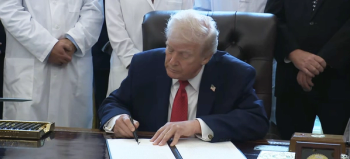
Cannabis Science and Technology
- September/October 2019
- Volume 2
- Issue 5
Is Your Cannabis Testing Laboratory Ready for ISO/IEC 17025:2017?
A review of the expert strategies and resources to streamline the laboratory accreditation process.
A review of the expert strategies and resources to streamline the laboratory accreditation process.
As more states consider the legalization of cannabis for both medical and recreational use, it seems a foregone conclusion that the plant will eventually be reclassified from its current Schedule I status at the federal level. At present, however, with no federal oversight or guidance available, the challenges of regulating this emerging industry fall squarely on the states themselves.
The proliferation of the cannabis industry has spread with such speed that it has outpaced the ability of governing bodies to respond and adapt. This has created a modern-day “wild west” scenario in which some states have strong, well-established protocols in place for governing the industry, while others are in a perpetual state of flux, with regulations and processes changing with the wind. Other states have stalled in the legislative process altogether. In the long run, the wide array of approaches to regulation will likely allow the best ideas from multiple programs to rise to the top and create an industry standard. Until then, the most viable option may be to adopt best practices from testing and calibration laboratories in other industries.
As a result, many states are turning to the International Organization for Standardization (ISO), particularly for cannabis testing laboratories, to standardize their practice. The ISO/IEC 17025:2017 (1) standard (hereafter ISO 17025) enables laboratories to demonstrate that they operate competently and generate valid results, thereby promoting confidence in their work both nationally and around the world.
While ISO 17025 is a familiar standard in the world of testing and calibration as a whole, it is largely new to the cannabis industry. The majority of cannabis laboratories are hiring personnel who are not only new to the industry, but also lack experience operating in a regulated laboratory environment. This often results in a severe underestimation of how challenging ISO 17025 accreditation can be to achieve and how much effort is required to maintain it.
I sat down with Julie Taylor, CEO of Northstar Scientific Solutions, a cannabis analytical laboratory development and consulting firm based in Denver, Colorado and Matthew Sica, Accreditation Manager, RMP, PT, and Medical with ANSI National Accreditation Board (ANAB) with offices in Fort Wayne, Indiana, Alexandria, Virginia, Cary, North Carolina, and Washington, D.C., to learn more about the accreditation process. We also discuss how accreditation compliments good laboratory practice (GLP) and good manufacturing practice (GMP), and how to avoid some of the common pitfalls facing new laboratories pursuing accreditation for the first time.
“Little by little, more of the quality aspect is being brought into the regulation for testing labs. To a degree, even more so than for the consumable products themselves,” said Taylor. “My opinion is that testing labs are being held to a much higher standard than any other players in this industry. I believe that ISO 17025 will become universally mandated sooner than later.”
Some laboratories may be wary of adopting ISO 17025, betting that under the eventuality of the U.S. Food and Drug Administration’s (FDA) regulatory purview, GLP will prevail as the standard of choice. Sica noted, however, that GLP aligns with ISO 17025 and allows for seamless integration. Cannabis laboratories can adopt the standard and then build in GLP requirements, along with any additional state regulations. This is the current approach taken by the construction, environmental, and Department of Defense sectors, among others.
“ANAB has a GLP program with supplemental requirements based on the federal register requirements,” said Sica. “The two really run concurrently. Embracing the ISO 17025 model and building upon that as the core standard with additional specificity is common in many industries, but to totally ignore it seems foolish.”
Both experts agreed that one of the biggest pitfalls for cannabis laboratories pursuing ISO 17025 accreditation is underestimating the challenges in achieving accreditation to the standard and believing it’s a simple process.
“It depends on the lab, but if they have not gone with a consultant, typically there’s a total lack of understanding of accreditation and its requirements,” said Sica. “A lot of times this occurs with investment groups. They hire somebody with a PhD and they whip together a lab. It’s only when their temporary state license is nearing expiration, and they need to get accredited, that they start working on it and find out how big a task it is.”
Taylor agreed. “A lot of what I hear is, ‘as soon as we pass our proficiency testing, we’ll get our accreditation,’” she explained. “But proficiency testing is only a very, very small piece of ISO 17025. It’s not only setting it up, it’s also the ongoing maintenance of the actual accreditation, and by maintenance I mean actually following the processes that you’ve set in place and reviewing them on a regular basis. Continual improvement is a big piece of ISO 17025, so you can’t just set it up and walk away.”
From the beginning, laboratories need to focus on hiring the right personnel-preferably individuals who have experience in a regulated laboratory environment. Currently, an estimated 80% of new hires have no experience in the cannabis sector, and many do not even have a degree in science.
“Look for applicants with a science background who have practical experience in a regulated lab,” Taylor said. “Whether that’s GLP, ISO, or GMP, if they have some sort of experience in a setting like that, then they understand the importance of a quality structure.”
When the laboratory manager and quality personnel don’t understand the complexity of the standard, they tend to underestimate the time, people, and resources required to design their processes and get them up and running, delaying accreditation and subsequent production timelines.
The management of documents alone-including standard operating procedures (SOPs), work instructions, and calibration logs-can create a burdensome workload that has the potential to significantly hobble a lean team of two to four employees trying to get a new laboratory up and running. A software-based quality management system (QMS) can prove invaluable in streamlining this process and creating an efficient method to control documents, manage testing and training records, and automate tedious manual processes like managing equipment logs, calibration schedules, and risk assessments-a major component of ISO 17025. It also allows you to manage your audits and assessments from one central data repository. Qualtrax is one such system, built from the ground up to effectively manage data, streamline the quality system, and simplify the audit process.
“In my opinion, a QMS is absolutely critical to have,” Taylor said. “It’s not only critical, but it’s critical to implement as soon as possible. You start with this list of 70–80 documents and SOPs that you know you need and they’re all in a spreadsheet. That spreadsheet gets emailed around, people are working on different versions, then you have the documents themselves and you have the same thing happening and it’s absolutely impossible to effectively track what’s going on.”
Investing in a QMS is also extremely valuable from an assessor’s perspective. The more information sources you bring to an audit, the closer an assessor will want to look at what your processes look like, making it much more likely that he or she will dig deeper and take more time to evaluate them.
“Normally, if a laboratory’s quality management system is paper based, they’re allowed more flexibility in how they maintain their records,” said Sica. “When you have a company using a digital platform, working through workflows, you can’t do a step without recording it, so there’s a greater chance of guaranteed documented compliance with a software platform.”
To sum it up, a software-based QMS can save a laboratory significant time and money. Automating processes frees up the quality and compliance team to focus on other aspects of the business. In an industry where funding is tight and many personnel are responsible for multiple roles, this can be a true lifeline.
With a software-based QMS system, you can think about what processes you need to meet your compliance and develop your SOPs simultaneously. You can work through the system to design workflows that mimic your SOPs so you only have to write them one time. If you wait to implement your QMS, you will have to go back and rewrite your SOPs to mirror what you’re actually doing in the laboratory. By investing in a QMS up front, you will save yourself one or two revisions and process development for every document.
“Once you’re up and running, you don’t have the time to revisit all of these documents,” said Taylor. “The priority then becomes generating revenue, not document development. To be able to implement the organization and structure provided by a QMS right from the beginning saves so much time-not just from a documentation perspective, but with the audit as well. When you’re going through your audit for ISO 17025 using a software-based QMS, everything is organized, it’s easily accessible, and you can run reports on all of your documents because they’re all centrally located, so it saves time on that front as well.”
Some laboratories have found the system so efficient that it has completely mitigated the need for a full-time compliance manager, saving significant overhead cost without sacrificing process transparency and record keeping ability.
When it comes down to actually creating your documents, Taylor believes a small team of two to four people is a great place to start.
“It greatly simplifies the task when fewer people are thinking through the processes and providing input on how they should be implemented,” she said. “Because ISO 17025 is written for testing and calibration labs generally, it lacks specifics. Figuring out how the standard applies to your day-to-day processes is something people tend to have a fairly difficult time doing. What falls under corrective actions? What would trigger that to happen? My method is to walk the team through different situations in the lab-essentially helping them navigate compliance.”
In addition to hiring the right personnel and acquiring a software-based QMS, Sica has three more suggestions for laboratories to consider as they prepare for accreditation and a prosperous future.
“First, carefully evaluate your instrumentation to make sure it’s going to meet your current needs as well as the potential changes within the regulatory world, such as detection limits,” he said. “Second, when you bring on methods, do a thorough method validation.”
It’s best to try to do a validation from a compendial source such as The United States Pharmacopeia (USP), The International Council for Harmonisation of Technical Requirements for Pharmaceuticals for Human Use (ICH), or one of the accepted pharmaceutical approaches to method validation. Sica also noted that one source of method validation may not fit all types of matrices.
“Finally, once you’re established and you have valid methods, innovate! Try to make those methods better and try to really do your work through samples to understand where you can improve the method itself, especially with the various matrices you’re encountering in this business, because they’re all so complex based on either the gelatins, the sugars, or the fats that are used in a lot of the edibles,” said Sica.
As laboratories make final preparations to move forward with the accreditation process, both experts offer a word of caution: while they agreed that hiring a consultant to help navigate the accreditation process could provide a significant advantage for a new laboratory, it must be noted that this path is not without risk. Taylor and Sica strongly encouraged any investment group or laboratory thinking about hiring a consultant to conduct a thorough background and reference check of the individual or group under consideration. Both have seen instances where individuals or groups with very little industry and regulatory experience have marketed themselves as experts and consultants, leading to significant delays in accreditation and the loss of critical capital resources.
Both Taylor and Sica agreed that one of the most valuable tips for new laboratories, or those pursuing ISO 17025 accreditation for the first time, is to use the resources that are available to you.
“There’s a big misconception about auditors and accrediting bodies that they’re big, mean, scary people,” said Taylor. “But they’re also there to help you, so use them!”
Sica echoed this sentiment. “Call your accreditation manager and ask technical questions,” he said. “While we won’t provide consultation, we’ll either provide guidance or sources where you can get the information on those things. We want to be seen as a resource as well as part of the facility’s improvement process. We are part of the quality system of that laboratory.”
References:
- International Standard, 2017, ISO/IEC 17025: General Requirements for the Competence of Testing and Calibration Laboratories.
Tom Borak is a Marketing and Communications Specialist at Qualtrax, Inc., a quality management software provider specializing in accreditation management for organizations facing pressure from a wide range of accreditation and compliance standards. Direct correspondence to:
How to Cite This Article
T. Borak, Cannabis Science and Technology2(5), 71-73 (2019).
Articles in this issue
about 6 years ago
Using Gas Chromatography for Accurate Terpene Analysis in Cannabisabout 6 years ago
Quality Control in the World of Cannabisabout 6 years ago
Hemp Testing Insanityabout 6 years ago
Medical Cannabis for Analgesia: Growth and DevelopmentNewsletter
Unlock the latest breakthroughs in cannabis science—subscribe now to get expert insights, research, and industry updates delivered to your inbox.




